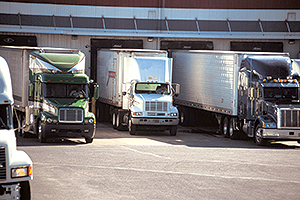ELD Era Brings Fleets, Shippers Toward More Collaboration, Experts Say
The trucking market has undergone change in many forms over the years as technology and regulatory developments have exerted larger and more intense influence on each aspect of motor carriers’ operations.
The latest change was the implementation of the federal electronic logging device, or ELD, mandate just over a year ago. It’s the latest in a long history of disruptive evolution in which carriers and shippers have had to adapt.
The advent of ELDs is influencing how carriers and shippers work together to control costs, deploy capacity, design networks, offer and charge for services, make capital investments, recruit and assign drivers and leverage new technology. What’s emerging is an era in which carriers and shippers finally seem to be truly embracing and living up to the established idea of collaboration versus confrontational, arm’s-length “take-it-or-leave-it” transactions.
“The ELD mandate certainly had an impact on the truckload sector, which pushed volume shipments into the [less-than-truckload] sector and worked to tighten capacity for us,” said Darren Hawkins, CEO of YRC Worldwide.
At the same time, weather-related events and a robust economy driving strong freight levels combined with ELDs to exacerbate an already acute capacity crunch.
“We always believe the key to rapidly changing economic and operating environments is flexibility, and we still strategically work together [with customers] to optimize supply-chain efficiency and identify services that provide the greatest value.”
The difference now with ELDs, Hawkins said, “is that we can all calculate how much loss of productivity comes with excessive detention.”
ELDs “actually drove capacity out of the industry,” as some carriers closed shop rather than upgrade their equipment, or lost drivers to other industries where jobs pay more or the work is less strenuous. Some of the players that left the market were poor-quality performers in the sense that they were not compliant with HOS and in some cases were responsible for a higher number of incidents or were typically fleets with lower scores in the federal Compliance, Safety, Accountability program.
For some shippers, even paying market rate, they found it difficult for carriers to respond. When a shipper had committed capacity from a carrier, they didn’t always get the capacity they signed up for.
The industry saw a gap of 10% — sometimes even 20% or 30% — in which the carrier failed to provide the contracted capacity, so the shipper had to go to the spot market, where price is higher. Shippers must be more accommodating, efficient and collaborative for carriers to want to work with them. They want feedback and want to talk about trends. They want to know what practices of theirs are making it more difficult on the carrier and driver. And they want to know how drivers are being treated upon arrival at their facilities.
Industry executives cited ELDs’ positive impact on safety as the biggest upside from implementation. Ultimately, our industry needs to continue carrying the torch to ensure we are being as safe as possible, using every tool available.
Relationships between shippers and carriers are getting better. The view of the business is less about commodity-type purchasing, and more about managing and having more understanding of the value of the professional driver, the right equipment and the quality of the service.
See Full Article @ttnews.com
